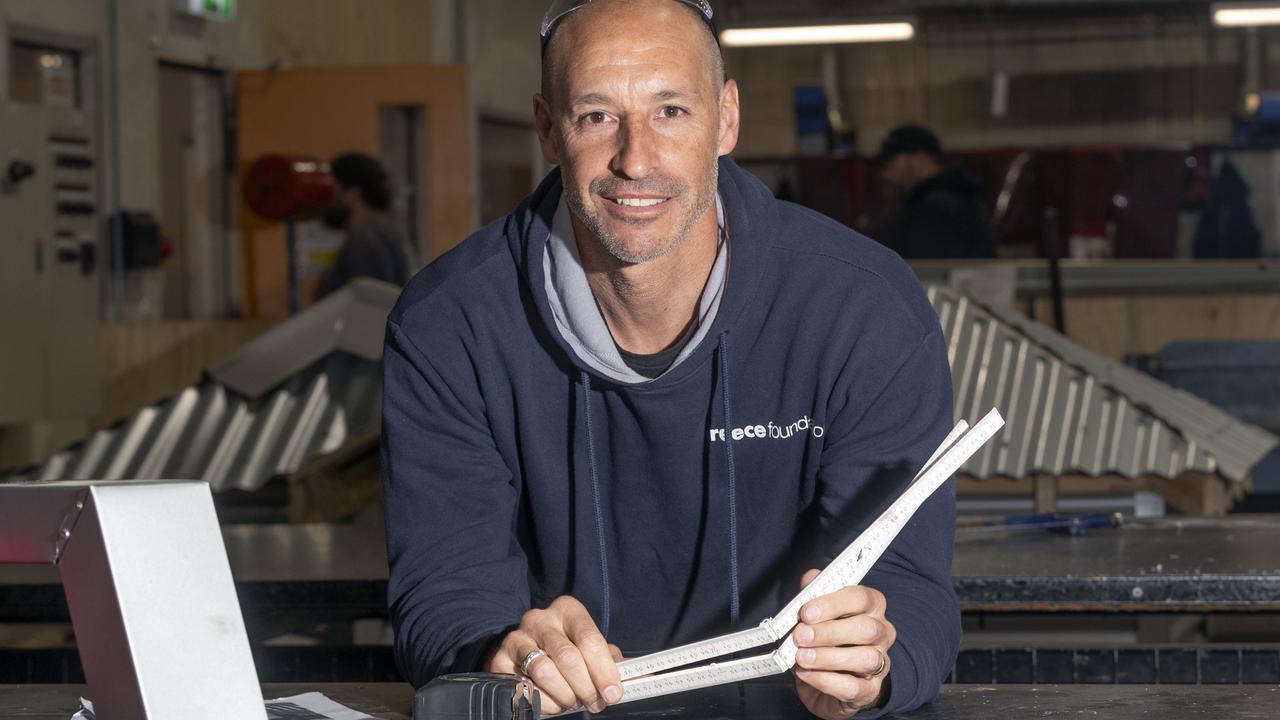How shark sightings at Victorian beaches this summer compare to last summer
The number of sharks spotted near popular Victorian swimming beaches over the past two summers has changed. Here’s what an expert has to say about it.
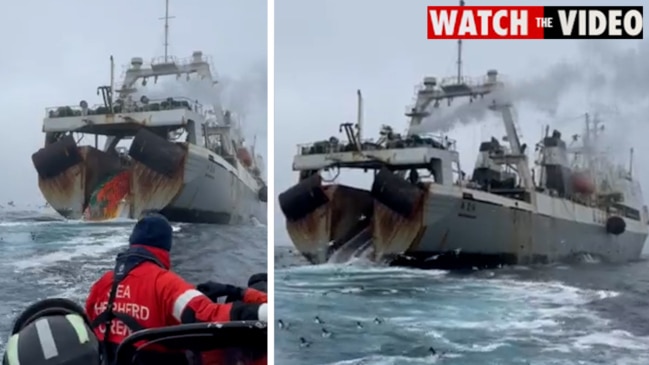
Victoria
Don't miss out on the headlines from Victoria. Followed categories will be added to My News.
Shark sightings at Victorian beaches plummeted by almost half this summer, compared to the previous year.
While there were 27 shark sightings reported to Dorsal Victoria (a shark spotting app and website) over the summer of 2021/22, there have been just 14 reports over the 2022/23 season.
In January this year, there were only seven shark sightings reported.
There were also just seven in February 2023.
By comparison, January 2022 had 24 reports.
Dorsal co-founder Sarah Beardmore said the reduced number this past summer likely did not mean there were fewer sharks around, just that fewer were being seen.
However, there could also be environmental reasons for the shift.
The number of sightings in summer 2022 and 2023 had returned to numbers typically recorded before the peak last summer, she said.
“That could be a variety of reasons, including less people creating reports to potentially something environmentally,” Ms Beardmore said.
Among the shark sightings this year, there have been two separate sightings of sharks 4m-plus in length, including a 4.5m great white at popular surf spot, Winkipop.
A surfer also had a close encounter with a 3m great white in February.
A 2m blue shark sighting closed the beach at Chelsea on February 19, while in the same month a shark pulled a diver’s float backwards ripping fish off the toggle at Wilson’s Promontory.
Supertrawlers plough through whales
Shocking vision has emerged from ocean warrior Sea Shepherd and the Bob Brown Foundation of super trawlers ploughing through a pod of more than one hundred fin whales, as they fed on krill in Antarctica.
The photos and video, taken by Sea Shepherd campaigners aboard the vessel Allankay — off the South Orkney Islands in Antarctica — were recorded on the first day Sea Shepherd Global arrived in the Southern Ocean for its latest campaign, aimed at stopping krill supertrawling.
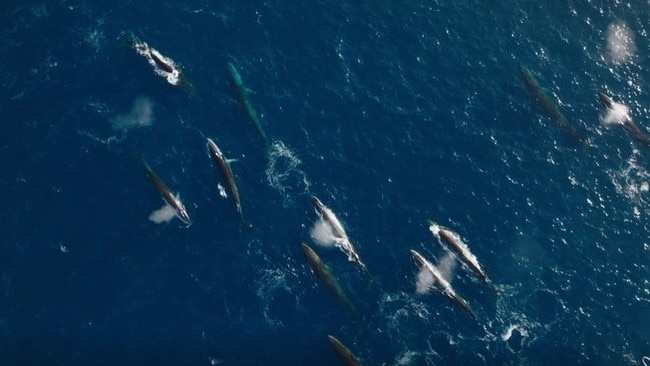
The two trawlers reportedly had their massive nets deployed as they pushed through the whale pod.
Sea Shepherd Global has teamed up with Australia’s Bob Brown Foundation (BBF) in monitoring the supertrawlers.
The BBF is investigating the krill fishing companies and how krill ends up on the shelves of Australian supermarkets and pharmacies as part of its “End Krill Fishing” campaign.
Antarctic campaigner with BBF, Alistair Allan, tweeted video of the trawler.
“This horror is happening right now. This vessel is the Long Fa, and I am alongside it in the small boat witnessing and documenting the destruction of an ecosystem. This is the reality of krill trawling in the Antarctic,” he said.
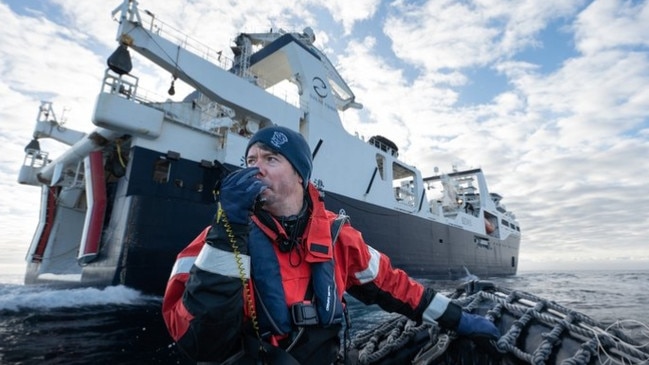
Sea Shepherd’s Captain Peter Hammarstedt said the two super trawlers appeared to make no effort to change course to avoid the feeding whale pod.
“It even appeared as if they deliberately steered toward the spouting megapod, knowing that where there are whales, there must be krill,” he said.
Meanwhile, another two super trawlers in the vicinity immediately hauled in their nets and fled the scene when Allankay arrived, Captain Hammarstedt said.
Sea Shepherd’s latest campaign, Operation Antarctica Defense, is fighting what it says is the greatest ecological threat to the Antarctic ecosystem, by monitoring the fishing activity of a growing fleet of trawlers targeting vital krill populations.
Krill, a small shrimp-like crustacean that forms the bedrock of the entire Antarctic ecosystem, is the primary food source for baleen whales and penguins, with most marine life either directly dependent on krill as food source or no more than one step removed.
Sea Shepherd said that with the international decline in whaling — including Sea Shepherd Global driving the last whalers out of the Southern Oceans in 2018 — krill trawling had taken its place, with 12 to 14 industrial trawlers targeting not whales directly, but instead the keystone species they depended on for survival.
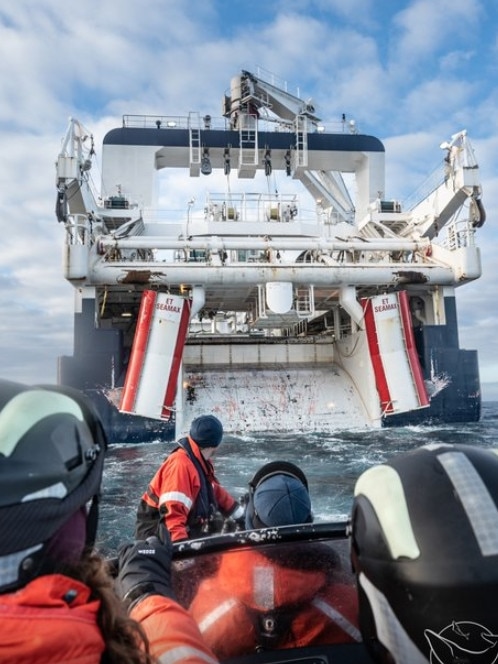

“We are seeing sharp declines in humpback whale pregnancies, a decrease in the body mass of fur seals and a plummeting of chinstrap penguin populations. All three species depend on krill as a primary food source. All while climate change has reduced both the amount and duration of the sea ice that krill need to survive,” Cpt Hammarstedt said.
Krill was being extracted out of the Southern Ocean primarily to produce krill meal, a feed additive in the aquaculture industry, but also, to churn out krill oil to mass produce Omega-3 dietary supplements, Sea Shepherd said in a report last week.
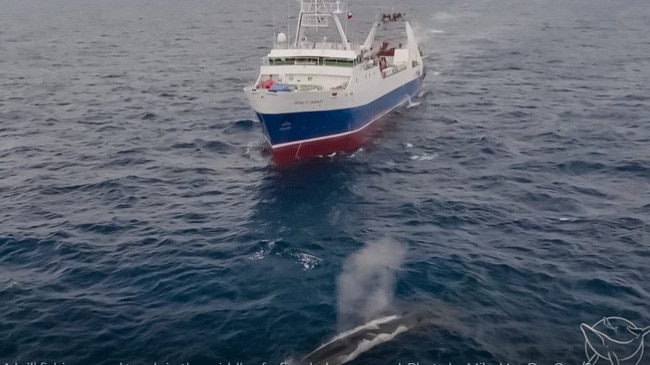
As a feed additive, the krill meal turned the otherwise grey flesh of captive salmon pink or red, mimicking their wild cousins, it said.
“It is an absurdity and a crime against nature that krill are being hoovered out of the remote Southern Oceans — by massive industrial vessels that have travelled halfway around the world to get there — just so that the linchpin species, on which the health of the entire ecosystem depends, can be sucked from the gaping mouths of hungry whales and penguins in order to turn farmed salmon pink,” the BBF’s Alistair Allan said.



